Powerful art from Robin Wood.
We can’t allow the Arctic to become another sacrifice zone for Big Oil.
Tell President Obama to put the Arctic off-limits to new offshore drilling!
Indigenous Amazonian women leaders march to protect their forest on International Women’s Day

Women leaders of the Sápara and Kichwa people of the Ecuadorian Amazon with international allies outside of the United Nations, New York City, September 2015. Photo: Emily Arasim

Patricia Gualinga, from the Sarayaku territory of Ecuador, who we got to see speak at the Women’s Earth & Climate Action Network event at the UN Climate Talks in Paris, is leading a coalition of women from the Ecuadorian Amazon in protests on International Women’s Day against Ecuador’s controversial deal with a Chinese oil company that hands over Sápara and Kichwa tribal land to oil exploration.
STATEMENT OF AMAZONIAN INDIGENOUS WOMEN IN DEFENSE OF LIFE, TERRITORY, AND ‘GOOD LIVING’ (BUEN VIVIR)
Puyo, Ecuador, Feburary 02, 2016
In the city of Puyo, we, Amazonian indigenous women, representatives of the Sapara and Shiwiar Nationalities, the Kichwa Kawsak Sacha and Sarayaku Peoples, and the communities of the Bobonaza Basin, want to express our deep concern with the contract of exploitation and exploration signed by the Ministry of Hydrocarbons with the company Andes Petroleum for Blocks 79 and 83 that directly affect the Sapara, Kichwa, Shiwiar, and Sarayaku territories.
We reject the signing of this contract which will affect our territories, the forest, the water, and the air; exactly how we have seen it occur in Block 10 in the Province of Pastaza. This is where serious social and environmental impacts have been generated, where women are the main victims and their ability to feed their families becomes impaired. There is deterioration of family health, and they suffer the division of their communities and other forms of violence.
This government policy has infringed on our rights since we have not been adequately consulted. We as women have not been considered and we have not participated in those government informational meetings. Plus, the consultations were not carried out as mandated by the ruling of the Inter-American Court of Human Rights (IACHR) in the 2012 case Sarayaku v. Ecuador.
Blocks 79 and 83 affect more than 40% of the Sapara Nationality’s territory which was recognized by UNESCO as a “Masterpiece of Intangible Cultural Heritage of Humanity” on May 18, 2001 because their language and culture are in danger of disappearing. This threat is increased with the development of an oil project in these territories.
Therefore, we reject this oil policy of the government and the possibility of further oil concessions in the southern Amazon; We denounce that deceptive mechanisms have been used to obtain signatures of community members in order to justify supposed prior consultation processes. We stand firm in the defense of our territories, for the defense of life and the good living of our families and communities.
In her opening remarks at the WECAN event in Paris, Osprey Orielle Lake, founder of the U.S.-based Network, recounted a conversation she’d had with an indigenous Sarayaku mother. “We carry our babies on our backs at night through the jungle,” the woman told her. “We can do anything.”
Let’s celebrate women environmental heroes on International Women’s Day!
Hi, everybody! @nrdc Science Reporter Perrin Ireland here. I love upping rad women who kick butt on behalf of the environment, so in honor of International Women’s Day—the best day of the year—here’s a look back at some of our favorite sheroes.
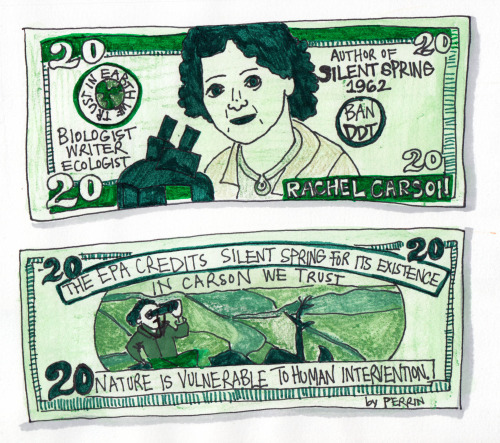
Put Rachel Carson on the $20 bill!
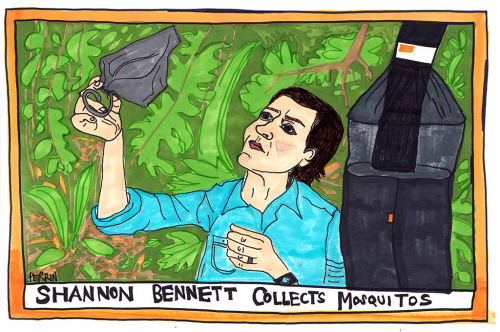
Shannon Bennett, virus hunter.

Step aside, gentlemen. Women from around the world are leading the way on solving climate change. Never was that more apparent than in Paris—below are some of the fierce women we encountered who are making moves to stop global warming.




We got to see Sylvia Earle and Jane Goodall, two science pioneers, tell it like it is in Paris.

And, of course, the legend that is Patti Smith shared her hope with us at a concert.
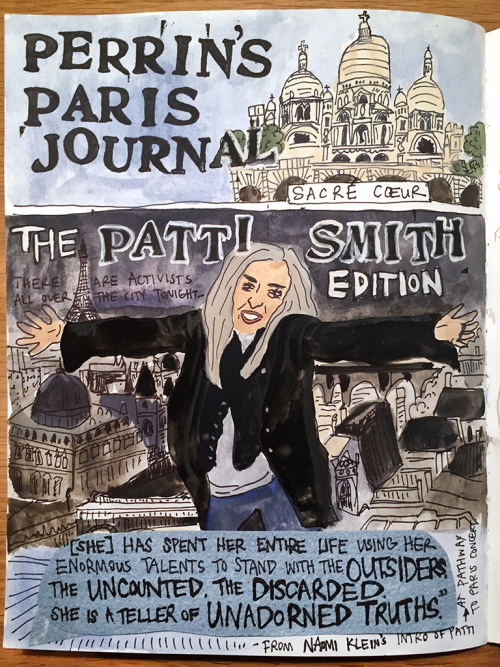
I got to go to the California Academy of Sciences for the Women in Science Summit, scribing talks from Goodall and Earle, as well as many other amazing women in the field.


Turns out Sylvia Earle likes scribing, too!
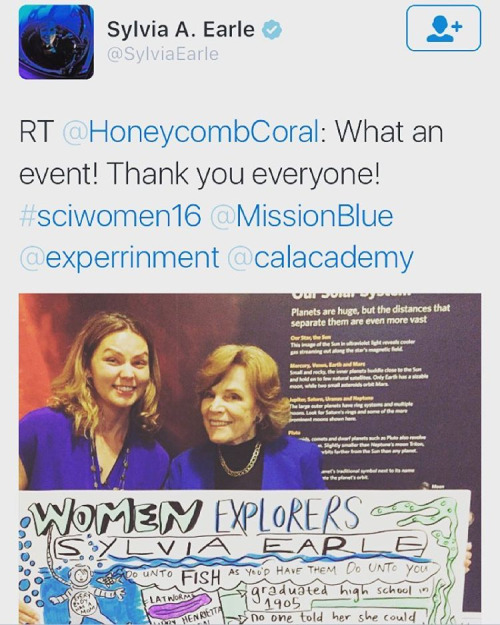
And here at NRDC, there are many inspiring women leaders who light the way toward climate solutions. We’ve featured them this past year in our #womancrushwednesday posts.

Thank you to all the women fighting for our forests, rivers, clean air, homes, and families. We are so proud and grateful for you!
@nrdc’s very own Adrianna Quintero, a fierce feminist and environmentalist, was featured on @nbcnews as part of @NBCBLK, @NBCLatino, @nbcasianamerica and @msfoundation‘s #31DaysofFeminism. They’ll be sharing stories of women of color who “lead the way to a more equal world” during the month of March.
Adrianna says, “I think I have always been a feminist. I have always known that I am perfectly able to achieve the same things as men and that my gender in no way limits me, and in many ways empowers me. While I come from a rather traditional Colombian family where girls are still expected to act a certain way, my parents always encouraged me and expected me to believe in my ability to achieve anything and to express myself.”
Rock on Adrianna!
Forms in Nature
“Forms by Nature” by Chromosphere is a mesmerizing audio-visual collaboration depicting our Earth, its plant and animal life, and beyond.
The animated video reminds us that, “Through scientific study and understanding, we deepen our connection to the natural world.” Its designs echo Charley Harper’s colorful and graphic nature illustrations.
Yes! Big congratulations and thanks to Leo for bringing more attention to climate change last night.
In the photo above, Leo’s holding the thirteenth United Nations Sustainable Development Goal which addresses climate action specifically. However each of the seventeen goals is connected to climate, as we explained last year when they were launched. Check them out!
Astonishing but true: The amount of food that is thrown away around the world every year could feed 800 million people.
This short video from National Geographic explores how it is that we’re wasting so much food.
Ceramic Reefs

Fragile and gorgeous like their real-life counter parts, these porcelain sculptures by artist and ocean activist Courtney Mattison draw attention to a precious ocean resource in danger.
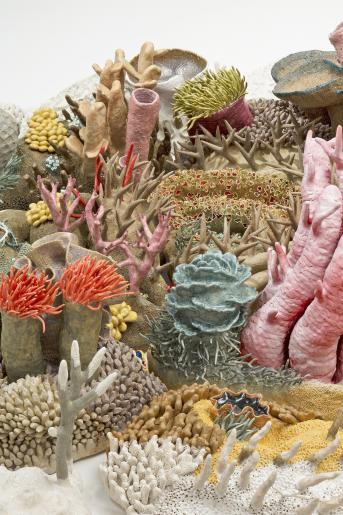
Threatened by overfishing, coastal pollution, and climate change, just twenty-two of 6,000 coral species around the world are protected by the Endangered Species Act. A study just this week revealed that ocean acidification is slowing reef growth. And coral bleaching threatens the survival of Australia’s Great Barrier Reef.
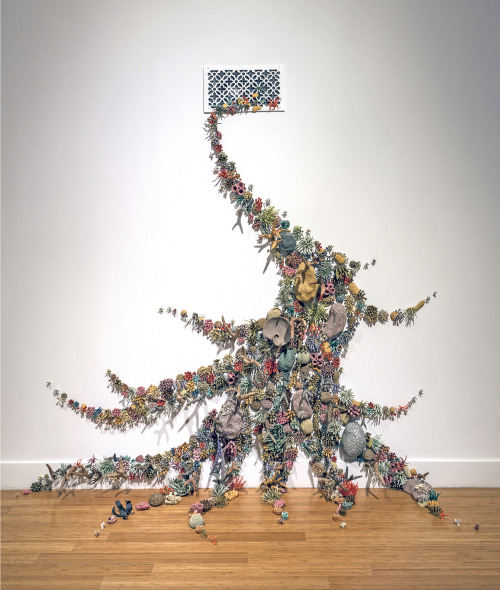
Coral plays a vital role in ocean ecosystems and biodiversity — one-quarter of all ocean species depend on them for food and shelter. And we in turn rely on these species for commerce and nutrition.
Mattison’s ongoing handmade porcelain series “Our Changing Seas,” intends to inspire ocean conservation. We want to see more art like Mattison’s especially if it means that the real life version inspiring it will be better protected.
The Maldives, a nation of small islands in the Indian Ocean, could be effectively underwater by 2100.

“We spend a lot of time worrying about the idea of rising sea level here,” said Maldives’ resident Hussain Khallib. “Many fear they will go to bed one night on dry land, and wake up in the morning in water. But we know the truth is far less dramatic. We will lose our nation and our homes one grain of sand at a time.”
Leonardo DiCaprio, during his Oscar acceptance speech

Congratulations to NRDC Trustee and environmental champion Leonardo DiCaprio on his Oscars win!

